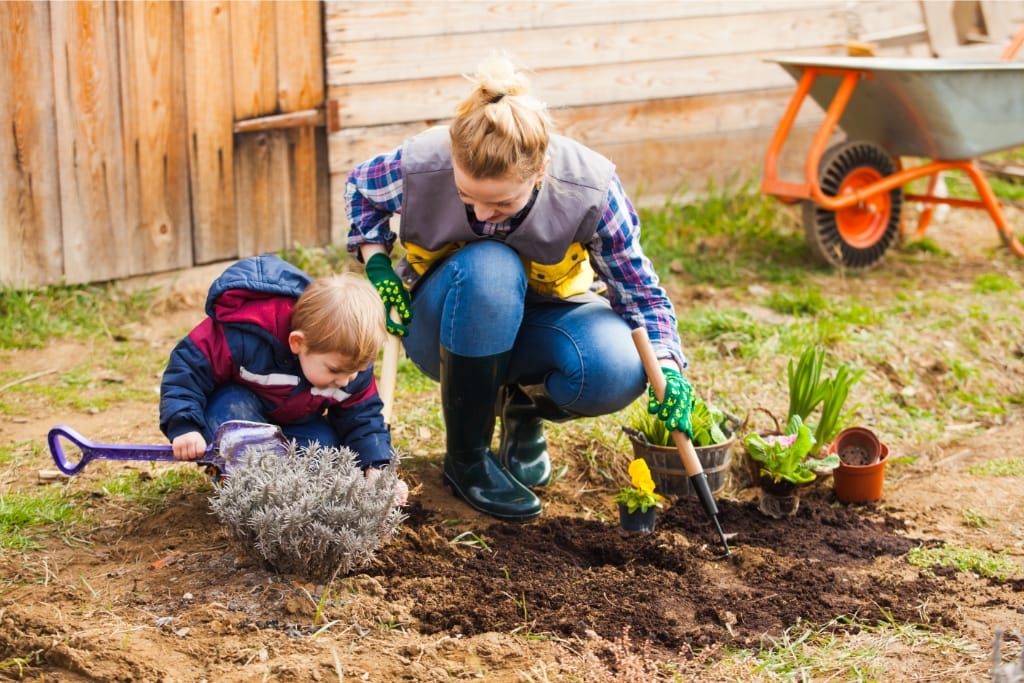In today's world, where environmental concerns are increasingly coming to the forefront, adopting an eco-friendly lifestyle has never been more critical.
This guide is designed to help mothers lead the way in making sustainable choices that benefit not only their families but also the planet.
It provides practical steps and strategies for reducing household waste, making sustainable living choices, and adopting eco-conscious parenting practices.
By following this guide, moms can play a pivotal role in safeguarding the environment for future generations while instilling values of responsibility and stewardship in their children.
Overview of eco-friendly living
Eco-friendly living encompasses a wide array of practices aimed at reducing one's environmental footprint through sustainable habits and choices.
This lifestyle is not only about minimizing waste or conserving resources but also involves a comprehensive approach towards how we shop, eat, travel, and generally interact with the world around us.
It highlights the importance of conscious decision-making in every aspect of our daily lives to protect natural resources, support ecological balance, and ensure the well-being of future generations.
By adopting eco-friendly living practices, individuals can contribute to a healthier planet, promote biodiversity, and mitigate the impacts of climate change, making it a crucial ethos for our times.
Importance of being an eco-friendly mom
Being an eco-friendly mom is of paramount importance in today's environmentally conscious world.
It represents a commitment to safeguarding the planet for future generations, including one's children.
By incorporating sustainable practices into family life, eco-friendly moms not only reduce their household's ecological footprint but also serve as role models, imparting crucial lessons on environmental stewardship to their children.
This proactive approach to living fosters a sense of responsibility and respect for the earth, ensuring that children grow up with the awareness and knowledge necessary to make environmentally sound decisions.
Being an eco-friendly mom is about creating a legacy of sustainability and nurturing a healthier, more sustainable world for all.
Benefits for the family and the environment
Adopting an eco-friendly lifestyle yields profound benefits not only for the environment but for the family as well.
By minimizing waste, conserving resources, and choosing sustainable options, families can significantly lower their living expenses while contributing to a healthier planet.
Children raised in such households learn the value of environmental preservation early on, developing habits that promote a sustainable future.
Furthermore, eco-friendly practices often lead to a healthier lifestyle, reducing exposure to harmful chemicals and promoting physical activity.
Collectively, these actions help in combating climate change, preserving natural habitats, and ensuring the availability of resources for future generations, showcasing the intertwined benefits of eco-friendly living for families and the environment alike.
Step 1: Reducing Household Waste
Initiating the journey towards an eco-friendly lifestyle often starts with reducing household waste, a fundamental step with a profound impact on our planet's well-being.
This initial step encompasses a wide range of practices, from minimizing the use of single-use plastics to implementing recycling and composting regimes.
By focusing on reducing waste, families not only contribute to lessening the burden on landfills and reducing pollution but also set the stage for a more sustainable and mindful consumption pattern.
Reducing household waste is not just about what we throw away; it's about reevaluating our everyday choices and fostering a culture of sustainability within the home.
Minimize Single-Use Items
Using reusable bags, bottles, and containers
Incorporating reusable bags, bottles, and containers into daily life stands as a simple yet impactful step toward reducing household waste and promoting sustainability.
This practice directly combats the proliferation of single-use plastics, which are major contributors to pollution and landfill waste.
By opting for durable, reusable options, families can significantly cut down on their consumption of disposable items, leading to a decrease in environmental pollution and a conservation of resources.
Furthermore, using reusable items often embodies a mindset of eco-consciousness that can inspire further sustainable choices in other aspects of life.
It's a change that not only benefits the environment but also encourages a more mindful and resourceful lifestyle.
Avoiding plastic straws and cutlery
Avoiding plastic straws and cutlery is a straightforward yet effective measure in reducing single-use plastic consumption, which is essential for a more sustainable future.
Plastic utensils are among the top contributors to marine pollution, endangering wildlife and ecosystems.
By shifting towards sustainable alternatives, such as metal, bamboo, or biodegradable options such as reusable drinking straws, families not only reduce their environmental impact but also contribute to a culture of conscientious consumption.
This small change in habit can have a significant ripple effect, demonstrating a commitment to environmental stewardship and encouraging others to consider the ecological footprint of their daily choices.
Opting for cloth diapers and napkins
Opting for cloth diapers and napkins is a sustainable choice that can substantially reduce waste and promote a healthier environment.
Unlike their disposable counterparts, cloth diapers and napkins can be reused numerous times, significantly cutting down on the amount of waste generated by a household.
This not only conserves resources and reduces pollution but also offers a cost-effective alternative to disposable products.
By choosing reusable clothing options, families take an important step towards minimizing their environmental footprint, fostering a culture of sustainability, and contributing to the broader effort to combat waste and pollution.
Cloth products often come in natural, non-toxic materials, which can be gentler on the skin and better for health, especially for young children.
Eco-Friendly Shopping Habits
Buying in bulk to reduce packaging waste
Buying in bulk presents a compelling opportunity to decrease packaging waste significantly and move towards a more eco-friendly lifestyle.
This approach not only reduces the amount of single-use packaging that ends up in landfills but also often proves to be more economical.
By purchasing larger quantities of goods, families can minimize the frequency of shopping trips and the associated environmental impact of transportation.
Furthermore, bulk buying encourages the use of reusable containers and bags, further diminishing the reliance on disposable packaging materials.
In essence, this practice not only aligns with sustainable living principles but also fosters a more mindful approach to consumption, highlighting the importance of environmental stewardship in everyday decisions.
Choosing products with minimal packaging
Choosing products with minimal packaging is an effective strategy for reducing waste and promoting sustainability.
This practice encourages manufacturers to reconsider their packaging designs and opt for more eco-friendly solutions.
For consumers, it means selecting products that have less impact on the environment both in production and disposal.
By prioritizing items with minimal or recyclable packaging, individuals can significantly contribute to reducing the amount of waste sent to landfills.
This choice not only lessens environmental pollution but also advocates for a shift towards a more sustainable economy where materials are valued and conserved.
In essence, purchasing minimally packaged products is a simple yet powerful act of environmental responsibility.
Supporting local and sustainable brands
Supporting local and sustainable brands is a critical step towards a more eco-friendly and socially responsible lifestyle.
When consumers choose to buy from businesses that prioritize sustainability, they fuel the demand for environmentally conscious products and practices.
Local brands often have a smaller carbon footprint due to shorter supply chains and a greater emphasis on using locally sourced materials.
Furthermore, these brands commonly adhere to ethical labor practices, ensuring that their workers are treated fairly and with respect.
By investing in local and sustainable businesses, individuals not only contribute to the reduction of environmental impact but also help bolster the local economy, creating a positive ripple effect throughout their communities.
This shift in consumer behavior can drive significant change, encouraging more businesses to adopt sustainable practices.
Recycling and Composting
Setting up a home recycling system
Setting up a home recycling system is a foundational component of living more sustainably and taking responsibility for one's environmental footprint.
It involves organizing a dedicated space within the home for separating and collecting recyclables such as paper, plastics, metals, and glass.
This system starts with educating all household members about what can be recycled and how to properly sort these materials.
By investing in labeled bins, containers, or in-home recycling bins for different types of recyclables, households can streamline the process, making it easier and more efficient to manage waste.
Furthermore, understanding the local recycling guidelines and schedules ensures that recyclables are disposed of correctly, maximizing the potential for these materials to be successfully processed and reused.
Establishing a home recycling system not only reduces the amount of waste sent to landfills but also fosters a culture of environmental awareness and action within the home.
Composting organic waste
Composting organic waste is an enriching practice that transforms kitchen scraps and yard waste into a valuable soil amendment, promoting sustainable waste management.
By setting up a composting system at home, individuals can divert a significant portion of their waste stream from landfills and reduce greenhouse gas emissions associated with waste decomposition.
This process not only enriches the soil, enhancing its structure, moisture retention, and nutrient profile but also supports local biodiversity by providing beneficial organisms with a rich habitat.
Engaging in composting encourages a closer connection to the natural cycle of growth, decay, and regeneration, illustrating a practical application of the principle that nothing in nature goes to waste.
Proper disposal of hazardous waste
Proper disposal of hazardous waste is vital for protecting public health and preserving the environment.
Hazardous wastes, including chemicals, batteries, electronics, and certain personal care products, require special handling to prevent harm to humans, animals, and the ecosystem.
By adhering to local regulations and guidelines for hazardous waste disposal, individuals can ensure these materials are treated, reduced, or reused in a manner that minimizes their environmental impact.
Many communities offer designated collection sites or specific pickup days to safely process these dangerous substances.
Engaging in responsible disposal practices demonstrates a commitment to environmental stewardship and the well-being of future generations, underscoring the importance of conscious consumption and waste management in our daily lives.
Step 2: Sustainable Living Choices
Step 2: Sustainable Living Choices encompasses a series of deliberate actions and lifestyle adjustments aimed at minimizing individual and collective environmental impact.
This phase goes beyond singular actions to integrate eco-friendly practices into all facets of daily life, from the products we buy to the way we manage our homes.
It encourages a deeper understanding and commitment to sustainability, advocating for changes that not only preserve but enhance the health of our planet.
Engaging in sustainable living choices means actively participating in the creation of a future where environmental integrity, social equity, and economic viability are harmoniously balanced.
Energy Efficiency at Home
Switching to LED or energy-saving light bulbs
Switching to LED or energy-saving light bulbs is a straightforward and impactful action anyone can take to reduce their energy consumption and carbon footprint.
LED bulbs are more efficient than traditional incandescent bulbs, using up to 90% less energy and lasting up to 25 times longer.
This not only helps in cutting down on electricity bills but also significantly reduces the frequency of bulb replacements.
Furthermore, the diminished energy usage associated with LEDs leads to fewer greenhouse gas emissions, contributing to the mitigation of climate change.
This simple change in household lighting is a practical step toward enhancing energy efficiency at home, reflecting a commitment to sustainability and environmental consciousness.
Using energy-efficient appliances
Using energy-efficient appliances is a critical component of living sustainably and reducing household energy consumption.
Appliances with high energy efficiency ratings consume less electricity, which can lead to significant savings on utility bills and a substantial decrease in household carbon emissions.
From refrigerators to washing machines, selecting models designed with energy conservation in mind not only supports environmental goals but also sets a standard for manufacturers to continue innovating in eco-friendly technologies.
Many governments and organizations offer incentives and rebates for purchasing energy-efficient appliances, making the initial investment more accessible for consumers.
Adopting energy-efficient appliances is a practical choice that aligns with a sustainable lifestyle, demonstrating a commitment to smart energy use and environmental stewardship.
Pro-Tip: Investing in small energy-efficient appliances carries substantial environmental and economic benefits.
These appliances, such as blenders, microwaves, and electric kettles, often operate for shorter periods but are used frequently, making their efficiency crucial for energy savings over time.
By choosing energy-efficient models, you can significantly reduce your home's overall electricity consumption, contributing to lower utility bills and decreased carbon footprint.
These appliances tend to have a longer lifespan due to their superior technology and construction, offering long-term savings and reducing waste.
Making the switch to energy-efficient small appliances is an easy yet effective way to enhance your commitment to sustainable living.
Shortlist Of Small Energy-Efficient Appliances:
- Household Blenders
- Electric Kettles
- Toaster Ovens
- Popcorn Poppers
- Coffee Machines
- Rice Cookers
- Air Fryers
- Juicers
- Electric Griddles
- Household Mixers
Implementing smart home technology for energy management
Implementing smart home technology for energy management represents a significant advancement in how we interact with and control our living environments.
With the aid of smart thermostats, energy monitors, and automated lighting systems, homeowners can achieve unparalleled efficiency in energy use.
These devices allow for real-time tracking and control over household energy consumption, enabling users to make immediate adjustments based on their needs while minimizing waste.
Furthermore, many smart devices learn from your habits and adjust automatically to optimize energy savings without compromising comfort.
This proactive approach to energy management not only contributes to significant reductions in utility bills but also plays a crucial role in the broader effort to reduce greenhouse gas emissions, marking a step forward in the pursuit of sustainable living.
Eco-Friendly Transportation
Encouraging walking, biking, or carpooling for short trips
Encouraging walking, biking, or carpooling for short trips is essential for reducing traffic congestion, lowering greenhouse gas emissions, and improving community health.
These transport modalities not only alleviate the environmental burden associated with individual car usage but also offer significant physical and mental health benefits.
Walking and biking, in particular, are excellent forms of cardiovascular exercise that can enhance fitness levels, whereas carpooling offers a social dimension to commuting, reducing the stress and isolation that can come with daily driving.
Furthermore, adopting these more sustainable modes of transportation for shorter distances can foster a greater sense of community and connection to the local environment, encouraging a more active and engaged lifestyle.
This shift in travel habits is a crucial component of building sustainable and resilient urban areas, aligning with broader goals of eco-friendly living and carbon footprint reduction.
Utilizing public transportation
Utilizing public transportation is a highly effective strategy for reducing individual carbon emissions and easing urban congestion.
By opting for buses, trains, or subways instead of private vehicles, each person can significantly cut down on the amount of greenhouse gases released into the atmosphere.
Public transport systems are designed to carry a large number of passengers, making them much more efficient in terms of energy use per capita compared to single-occupancy vehicles.
The use of public transit can lead to reduced traffic on the roads, shorter travel times, and lower levels of pollution.
This choice not only advances sustainability goals by conserving energy and reducing carbon output but also supports the development of more livable, breathable urban environments.
Considering a hybrid or electric vehicle
Considering a hybrid or electric vehicle is a forward-thinking choice for anyone aiming to minimize their environmental impact.
Hybrid and electric vehicles (EVs) operate on cleaner energy sources, significantly reducing or even eliminating the greenhouse gas emissions typically associated with traditional petrol or diesel engines.
This shift not only contributes to cleaner air and pollution reduction but also aligns with global efforts to combat climate change.
Furthermore, the operating costs of EVs and hybrids are often lower, as they require less maintenance than internal combustion engines and benefit from lower fuel costs.
With advancements in EV technology leading to longer battery life and a growing network of charging stations, making the switch to a hybrid or electric vehicle is becoming an increasingly practical and environmentally responsible choice.
Water Conservation
Installing low-flow showerheads and faucets
Installing low-flow showerheads and faucets is an effective and simple measure for conserving water in both residential and commercial settings.
These devices are designed to reduce the flow of water, ensuring that less is used during daily activities such as showering, hand-washing, and dishwashing.
Despite the reduced flow, these fixtures are engineered to maintain a high-pressure output, ensuring that comfort and efficiency are not compromised.
The adoption of low-flow technology can lead to significant savings on water bills and plays a critical role in promoting sustainable water use.
By opting for these water-efficient fixtures, individuals and businesses can contribute to the conservation of this precious resource, aligning with broader environmental sustainability goals and reducing the ecological impact of their water use.
Fixing leaks promptly
Fixing leaks promptly is a crucial step in water conservation efforts and maintaining the integrity of a home's plumbing system.
Even minor leaks in faucets, toilets, or pipes can lead to significant water wastage over time, contributing to unnecessary increases in water bills and the depletion of water resources.
Addressing leaks without delay not only prevents the escalation of water loss but also helps in avoiding potential damage to home structures or the development of mold and mildew, which can pose health risks.
Proactive leak management is a simple yet effective way of supporting environmental sustainability while ensuring the efficient operation of household utilities.
Implementing rainwater harvesting for garden use
Implementing rainwater harvesting for garden use is a cost-effective and environmentally friendly method for reducing reliance on municipal water supplies.
This practice involves collecting and storing rainwater from rooftops, which can then be used for watering gardens, lawns, and even for household purposes after proper treatment.
By utilizing rainwater, gardeners can ensure their plants receive soft, naturally occurring water, which is often better for plant health than treated tap water.
Rainwater harvesting helps in managing stormwater runoff, reducing the risk of flooding and erosion in urban areas.
It embodies a sustainable approach to resource management, promoting water conservation while supporting vibrant and healthy gardens.
Pro-Tip: Investing in rain barrels is not just an eco-friendly practice but also a smart financial decision.
By capturing and storing rainwater, you significantly reduce your reliance on municipal water supplies, which can lead to substantial savings on your water bill.
Rainwater is free from chlorine and other chemicals found in traditional water systems, making it ideal for watering your garden, lawn, or houseplants.
This simple step towards sustainability can have profound impacts on your wallet and the environment.
Before setting up a rain barrel system, it's crucial to research and understand the legalities of rainwater harvesting in your area.
Regulations on rainwater collection can vary significantly from one region to another, with some areas imposing restrictions or requiring permits.
Ensuring you comply not only prevents potential legal issues but also promotes responsible environmental stewardship.
Taking the time to understand your local laws can help you effectively and legally benefit from this sustainable practice.
Step 3: Eco-Conscious Parenting and Lifestyle
Step 3: Eco-Conscious Parenting and Lifestyle embodies the essence of integrating sustainability into the fabric of family life, guiding parents and children alike towards a more environmentally responsible way of living.
This approach encourages families to adopt practices that reduce waste, conserve resources, and foster a deep connection and respect for the natural world.
By doing so, eco-conscious parenting not only contributes to the global effort of environmental preservation but also instills in the next generation the values of mindfulness, stewardship, and responsibility towards our planet.
Greening Personal Care and Cleaning Products
Choosing natural and organic personal care products
Choosing natural and organic personal care products is a crucial step towards a healthier lifestyle and environmental conservation.
These products are made from ingredients that are grown without the use of harmful pesticides, synthetic fertilizers, or genetically modified organisms, ensuring they are safer for your skin and the planet.
Many natural and organic products come in eco-friendly packaging, further reducing your carbon footprint.
By opting for these alternatives, consumers not only protect themselves from exposure to harsh chemicals often found in conventional beauty products but also support sustainable practices that preserve biodiversity and reduce pollution.
Using eco-friendly cleaning products or homemade alternatives
Using eco-friendly cleaning products or homemade alternatives is a simple yet impactful way to enhance household sustainability and reduce exposure to toxic substances.
These green cleaning solutions are crafted from natural ingredients and are devoid of the harsh chemicals present in traditional cleaning products, making them safer for both the environment and human health.
Homemade cleaners, often made from common household items like vinegar, baking soda, and lemon, offer an effective, low-cost alternative that minimizes pollution and plastic packaging waste.
By switching to eco-friendly or DIY cleaning solutions, individuals contribute to a healthier home environment and a more sustainable world, one cleaning task at a time.
Avoiding products with harmful chemicals
Avoiding products with harmful chemicals is an essential component of leading a sustainable and health-conscious lifestyle.
This precautionary measure safeguards not only the health of individuals and their families but also contributes positively to the environment.
Harmful chemicals, commonly found in a wide range of products from household cleaners to personal care items, pose risks such as allergic reactions, long-term health conditions, and pollution of air and water systems.
By choosing products that are free from these toxic substances, consumers play a vital role in promoting a safer, healthier home environment while encouraging industries to adopt more eco-friendly manufacturing practices.
Sustainable Diet and Meal Planning
Increasing consumption of plant-based meals
Increasing the consumption of plant-based meals is a powerful strategy for promoting both personal health and environmental sustainability.
Plant-based diets are associated with lower risks of heart disease, obesity, and certain types of cancer, benefiting individual wellness by focusing on nutrient-rich fruits, vegetables, grains, and nuts.
From an environmental perspective, shifting towards plant-centric eating reduces the demand for animal agriculture, a significant source of greenhouse gas emissions, water use, and land degradation.
This practice not only conserves natural resources but also minimizes one's carbon footprint, exemplifying a proactive approach to combating climate change and fostering a harmonious relationship with our planet.
Reducing food waste through meal planning and proper storage
Reducing food waste through meal planning and proper storage is a key aspect of a sustainable lifestyle, enabling individuals to minimize their environmental impact while saving money.
By thoughtfully planning meals, consumers can buy only what they need, reducing the likelihood of over-purchasing and food waste.
Proper storage techniques, such as understanding how to effectively use a refrigerator's different compartments and the benefits of airtight containers, can significantly extend the life of food products.
This approach not only conserves resources but also encourages a more mindful and efficient use of the food we consume, aligning with broader goals of sustainability and responsible consumption.
Supporting organic and locally-grown produce
Supporting organic and locally-grown produce is a key element in building a sustainable food system that benefits both the environment and local economies.
Organic agriculture avoids the use of synthetic pesticides and fertilizers, promoting soil health and biodiversity, while local sourcing reduces the carbon footprint associated with long-distance transportation of goods.
Furthermore, buying locally and organically supports small and family-owned farms, contributing to the economic vitality of communities.
This practice not only ensures consumers have access to fresh, nutritious foods but also fosters a closer connection between people and the sources of their food, encouraging a greater appreciation and respect for the natural world.
Pro-Tip: With an Amazon Prime Membership, shopping at Whole Foods Market becomes not just a grocery run, but a treasure hunt for exclusive deals and savings.
Prime members can access special discounts on select items, including organic produce and premium meats, each week.
Plus, using the Amazon app at checkout can seamlessly apply these savings, making health-conscious shopping both affordable and convenient.
Members enjoy the perk of 2-hour delivery windows in many cities, streamlining meal planning and last-minute dining decisions.
Teaching and Modeling Eco-Friendly Behavior
Educating children about environmental issues
Educating children about environmental issues is a critical step toward nurturing a generation that is conscious of and committed to sustainability.
By integrating environmental education into both formal schooling and everyday life, children can learn about the significance of preserving natural resources, the impact of human activities on the planet, and the importance of adopting eco-friendly habits.
This knowledge empowers them to make informed decisions and take actionable steps in their daily lives to contribute to environmental preservation.
Furthermore, fostering an early appreciation for the environment encourages a lifelong commitment to conservation efforts and promotes a sense of responsibility toward ensuring a healthier planet for future generations.
Participating in community clean-up or conservation projects
Participating in community clean-up or conservation projects serves as a tangible way for individuals and groups to contribute positively to their local environment while fostering a sense of community and shared responsibility.
These initiatives not only lead to the beautification and restoration of local parks, beaches, and natural habitats but also raise awareness about the importance of environmental stewardship.
Engaging in these activities provides an opportunity for volunteers to learn about the local ecosystem, the challenges it faces, and the impact of collective action in making a difference.
Furthermore, it strengthens community ties, as people from diverse backgrounds come together with a common goal of preserving the natural beauty and health of their shared environment.
Leading by example in daily eco-friendly practices
Leading by example in daily eco-friendly practices is one of the most effective ways to inspire others to adopt more sustainable habits.
When individuals make conscious choices, like reducing energy consumption, minimizing single-use plastic, or opting for sustainable travel options, they not only lower their environmental impact but also influence their peers, family, and community to consider their ecological footprint.
Such practices, when observed by others, can encourage a ripple effect, leading to broader societal shifts towards sustainability.
This approach emphasizes action over words, demonstrating that making environmentally friendly choices is both feasible and beneficial in everyday life.
Conclusion
To become an eco-friendly mom, one can adopt several practical measures that collectively contribute to a more sustainable lifestyle.
Initiating the shift towards plant-based diets, reducing food waste through careful meal planning and proper storage, and supporting organic and locally-grown produce are foundational steps in minimizing one's environmental impact while promoting health and supporting local economies.
Furthermore, actively educating children about environmental issues, participating in community conservation projects, and leading by example in daily eco-friendly practices are critical in fostering a culture of sustainability both at home and within the community.
By integrating these actions into daily life, eco-friendly moms play a pivotal role in driving positive environmental change and setting a sustainable example for future generations.
The long-term impact of eco-friendly living on the family and the planet
The long-term impact of eco-friendly living on the family and the planet is profound and far-reaching.
For families, adopting sustainable practices can foster a stronger bond as they work together towards a common goal, instill valuable life lessons about responsibility and conservation, and often lead to healthier lifestyles through mindful choices about food, transportation, and consumption.
For the planet, the cumulative effect of multiple families making eco-friendly choices can significantly reduce carbon footprints, enhance biodiversity, and help preserve natural resources for future generations.
Eco-friendly living underscores the interconnectedness of our actions and their ripple effects on the global ecosystem, promoting a sustainable and prosperous future for all inhabitants of the planet.
Encouragement and resources for continuous eco-friendly growth
Encouragement and resources for continuous eco-friendly growth are essential for maintaining momentum and deepening commitments to sustainability.
This can include access to educational materials, online forums, and community workshops that provide insights into advanced sustainable practices and innovations.
Equally important are supportive networks and platforms that celebrate eco-friendly achievements and encourage the sharing of tips and strategies among individuals striving for a greener lifestyle.
Furthermore, leveraging technology through apps that track carbon footprints, suggest eco-friendly alternatives, and promote sustainable brands can empower families to make informed choices.
By taking advantage of these resources and cultivating a supportive environment, individuals and communities can ensure ongoing progress towards eco-friendly living, contributing to a healthier planet and a sustainable future for upcoming generations.
Related Articles and Guides
- How To Plan An Eco-Friendly Birthday Party For Your Child
- 10 Simple Ways To Make Your Baby's Room Eco-Friendly
Download Our Free E-book!







